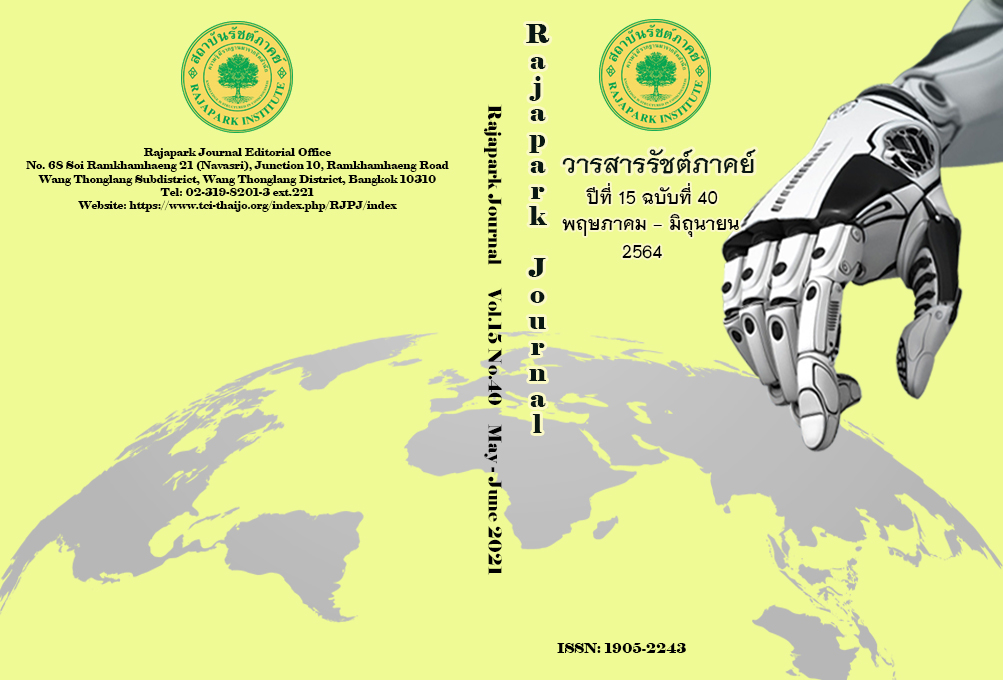Obtaining Insights from Museum Review
Main Article Content
Abstract
The study aimed to obtain insights from museum reviews regarding topics that were discussed among over 300,000 reviewers between 2007 and 2020. Additionally, given the review rating, the study aimed to investigate reasons for those who gave low review ratings. We used secondary data of museum reviews scraping from TripAdvisor. The topic modeling technique of Latent Dirichlet Allocation (LDA) was used to systematically extract topics from text. The computer algorithm assigned each topic a probability distribution over vocabularies and clustered each topic in an unsupervised mechanism based on saliency and relevance. We then visualized our result in an Inter-topic Distance Map. According to our findings, there were seven broad topics that reviewers talked about including “Art”, “Service”, “Dining”, “History”, “Visitor”, “Animal” and “Vehicle”. To be more specific, around 40% of topic contribution involved topics of “service”, “visitor” and “dinning”. These topics' expectations could be managed and improved by sets of marketing strategy in terms of the marketing mix to satisfy customer needs and feedbacks. While the monetary value of museum experiences was a concern for those who gave a low rating. Hence, we recommended the use of a customized pricing strategy which is likely to commensurate with customer expectation as well as increase museum operation efficiency.
Article Details
Views and opinions appearing in the Journal it is the responsibility of the author of the article, and does not constitute the view and responsibility of the editorial team.
References
Anderson, E. T., & Simester, D. I. (2014). Reviews without a Purchase. Journal of Marketing Research, 51(3), 249-269.
Andreasen, A. R. (2012). Rethinking the Relationship between Social/Nonprofit Marketing and Commercial
Marketing. Journal of Public Policy & Marketing, 31(2), 36-41.
Arnett D. B., German S. T., & Hunt S. D. (2003). The Identity Salience Model of Relationship Marketing Success: The Case of Nonprofit Marketing. Journal of Marketing, 67(2), 89-105.
Berger, J. (2015). Word of Mouth and Interpersonal Communication, the Cambridge Handbook of Consumer Psychology. Cambridge, UK: University of Cambridge Press.
Chuang, J., Manning C. D., & Heer, J. (2012). Termite: Visualization Techniques for Assessing Textual Topic Models. AVI '12: Proceedings of the International Working Conference on Advanced Visual Interfaces, May 2012, Pp.74-77.
Graham, A. (2020). Attract More Guests with These Museum Marketing Tips. Retrieved January, 15, 2021, from https://bigsea.co/attractions-and-museums/museum-marketing-tips
Manoukian, J. (2019). Museum Marketing: Top Trends and Strategies for Success. Retrieved February 10, 2021, from https://crowdriff.com/resources/blog/museum-marketing
Kane C. G., Alavi M., Labianca G., & Borgatti S. P. (2014). What is Different about Social Media Networks? A Framework and Research Agenda. MIS Quarterly, 38(1), 275-304.
Kumar, V., Sharma A., Naveen, D., & Rountree C. (2015). Implementing Integrated Marketing Science Modeling at a Non-Profit Organization: Balancing Multiple Business Objectives at Georgia Aquarium. Marketing Science, 34(6), 804-814.
Lamberton, C., & Stephen A. T. (2016). A Thematic Exploration of Digital, Social Media, and Mobile Marketing: Research Evolution from 2000 to 2015 and an Agenda for Future Inquiry. Journal of Marketing, 80(6), 146-172.
Packard, G., & Berger J. (2017). How Language Shapes Word of Mouth's Impact. Journal of Marketing Research, 54(4), 572-588.
Pauwels, K., Trusov, M., & Bucklin R. E., (2009), Effects of Word-of-Mouth versus Traditional Marketing: Findings from an Internet Social Networking Site. Journal of Marketing, 73, 90-102.
Prince Maha Chakri Sirindhorn Anthopology Center. (2020). Thai Museums Statistics. Retrieved February, 10, 2021, from https://db.sac.or.th/museum/statistic
Rosario, B., Sotgiu, F., Valck, K., & Bijmolt T. (2016). The Effect of Electronic Word of Mouth on Sales: A Meta-Analytic Review of Platform, Product, and Metric Factors. Journal of Marketing Research, 53, 297-318.
Schweidel, D. A., & Moe, W. W. (2014). Listening in on Social Media. Journal of Marketing Research, 51(4), 387-402.
Sievert, C., & Shirley K. E. (2014). LDAvis: A method for visualizing and interpreting topics. Proceeding of the workshop on interactive learning, visualization, and interfaces, June 2014, Baltimore, Maryland, USA. Pp. 63-70.
Surawattananon, N. (2019). Tourism and its role in driving the Thai economy; Is a hero necessary? A real hero?. Retrieved February 10, 2021, from https://www.bot.or.th/Thai/ResearchAndPublications/articles/Pages/Article_29Oct2019.aspx
Rosen, E., & Simonson, I. (2014). Absolute Value: What Really Influences Customers in the Age of (Nearly) Perfect Information. New York: Harper Business.
Walhmer, M. (2018). How many museums in the world?. Retrieved February 10, 2021, from https://www.museumplanner.org/how-many-museums-in-the-world
WebFx. (2021). Creative Marketing Ideas to Attract Museum Visitors. Retrieved February 10, 2021,
from https://www.webfx.com/industries/tourism-hospitality/museums/marketing-ideas.html
Wedel, M., & Kannan P. K. (2016). Marketing Analytics for Data-Rich Environments. Journal of Marketing, 80(6), 97-121.


